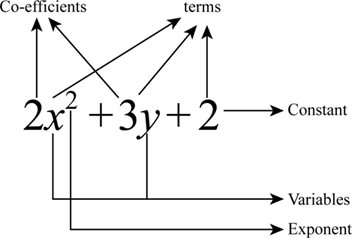Polynomials Homework Help
Polynomials
A mathematical expression contains constants, variables and non-negative integer exponents, that can be combined by using the basic mathematical expressions like addition, subtraction and multiplication but not division by a variable is called polynomial. In Greek, “Poly” means ‘many’ and in Latin “nomial” means ‘terms’. Thus, it is defined as an expression with many terms.

Note that, a term includes one or more variables raised to the non-negative
integer power and multiplied by a constant co-efficient. The term includes
only a constant is called constant term. Moreover, it is not possible to
have infinite number of terms in a polynomial.
Polynomial function:
If there is only one variable involved in a polynomial, then it is named as
a polynomial function. The general form of a polynomial function is as
follows:

Where c0, c1,…cn-1,cn is a constants in R and n is a non-negative integer.
Note that, c0xn+c1xn-1+…+cn-1x+cn is a one-variable polynomial.
Examples:
1. Consider 2x2+3y+2. Here the number of terms is 3. Variables are x,y whose highest degree, 2. It is a polynomial.
2. Consider –4x2+5y–3+2. Here, the number of terms is 3. Variables are x,y in which y has a negative exponent. It is not a polynomial.
3. Consider

. Here, the number of terms is 3. Variables are x,y in which y has a fractional exponent. It is not a polynomial.
4. Consider

. Here, the number of terms is 3. Variables are x,y with one variable is a division of another variable. It is not a polynomial.
Types of polynomial:

Math Tutorials
- Math - Polynomials
- Math - Series and Sequences
- Math - Dividing Polynomials
- Math - Factoring Polynomials
- Math - Solving Quadratics
- Math - Solving Inequalities
- Math - Solving Equations
- Math - Complex Numbers
- Math - Matrix
- Math - Inverse Functions
- Math - Graphing Quadratic Functions
- Math - Graphing Polynomial Functions
- Math - Functions
- Math - Exponentials and Logarithms
- Math - Cramer's Rule
- Math - Absolute Value & Inequalities

